Text
Ah, unemployment!!
job hunting gothic
The job posting looks like a great fit. You have the skills listed, and the responsibilities are relevant to what you would like to do. The requirements section asks for a PhD in a seemingly unrelated field. It pays minimum wage.
You upload your résumé to the website. An error message appears, informing you that only the following file types are supported: .rtf, .doc, .docx and .pdf. Your file is one of the document types. You try the upload again. An error message appears, informing you that files must be under 50KB. You reduce the file size. The first error message appears again.
Your résumé file is finally accepted to the website. You continue to the next page, where you are cheerfully requested to manually enter all of your work and education experience. If you are lucky, a machine has helpfully used the résumé file you uploaded to autofill all fields for you. They are all wrong.
You send in fifty job applications in less than a month. You wait patiently for replies. When none come, you look for contact information to follow up with them. There is no information available. You wonder if the job ever existed in the first place.
You receive an email from someone who saw your profile on a jobsite and wants to offer you a job stuffing envelopes. You have a master’s degree.
Two months in, you have not received any viable offers. You start thinking about stuffing envelopes for a living.
You are finally contacted by someone: they want to interview you. You do the interview. A second. A third. A fourth. You start to wonder how many levels this process goes through. They give you nothing but positive feedback. You keep doing interviews.
3K notes
·
View notes
Text
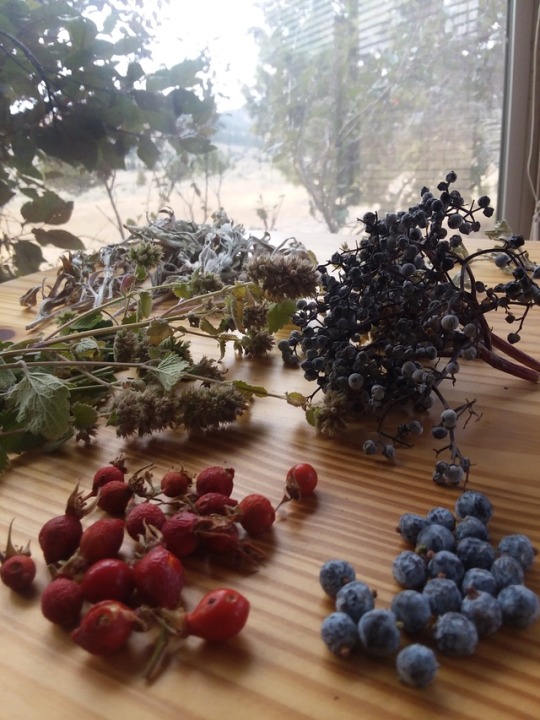
Fall in eastern Oregon and the pickings of the day: rosehips, juniper berries, elderberries, catnip, sagebrush, white sagewort
#desert herbs#medicinal herbs#herbs#desert medicinal plants#medicinal plants#herbalism#autumn#east oregon
2 notes
·
View notes
Text
Pittsburgh Spring Plants
A quick entry on some plants coming up here as a sporadically pleasant spring progresses into a humid, unbearable summer.
Jack in the Pulpit
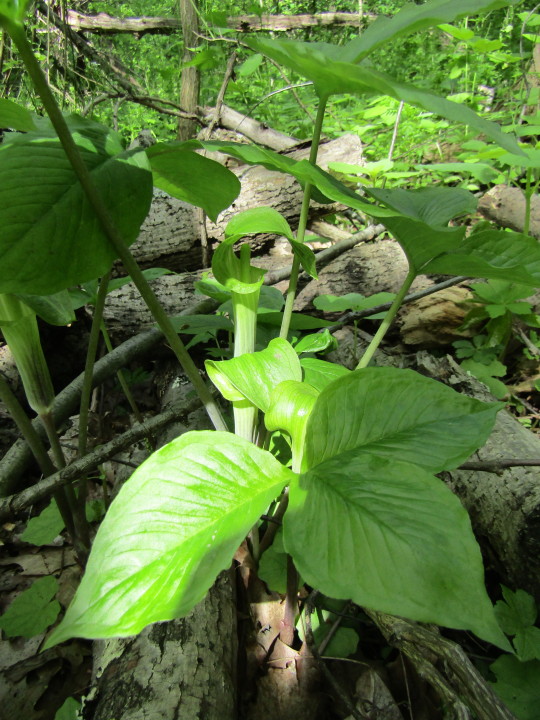
Not used in modern herbal medicine, contains calcium oxalate, which is not the best for you; in fact, the plant was used to poison enemies by some native tribes, apparently. Easy to identify when in flower, but even at other times, the trifolate leaves are pretty distinctive.
Trillium
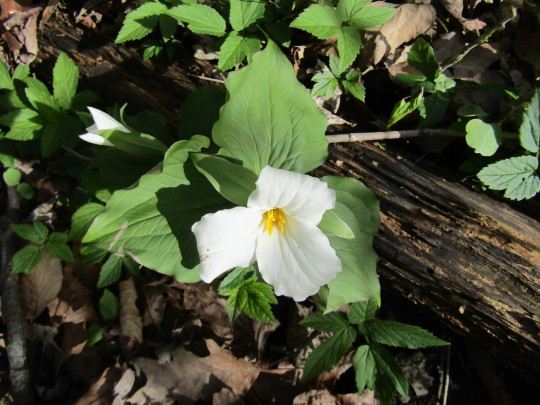
Another showy trifolate plant. Technically, the leaves are bracts rather than leaves. Historically used for stopping uterine hemorrhage in childbirth, abortion, and miscarriage. The plant is very delicate, if even one part is picked, the rest of the plant may die. So, you know, don’t pick it.
Dutchman’s Breeches
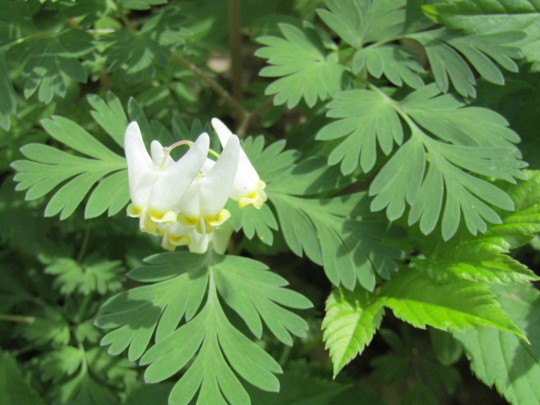
So called because the flowers look like puffy little pantaloons hung upside down on a drying line, but to me they look more like little horned heads. Like some other dicentras, contains alkaloids that affect the heart and central nervous system, relatively poisonous.
Plantain
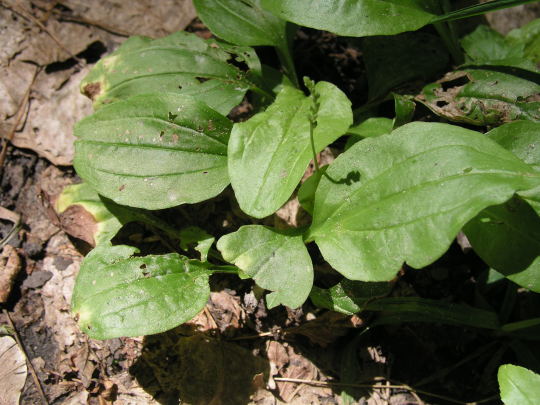
Most people know this one. Kind of slimy when you rub it.
Burdock
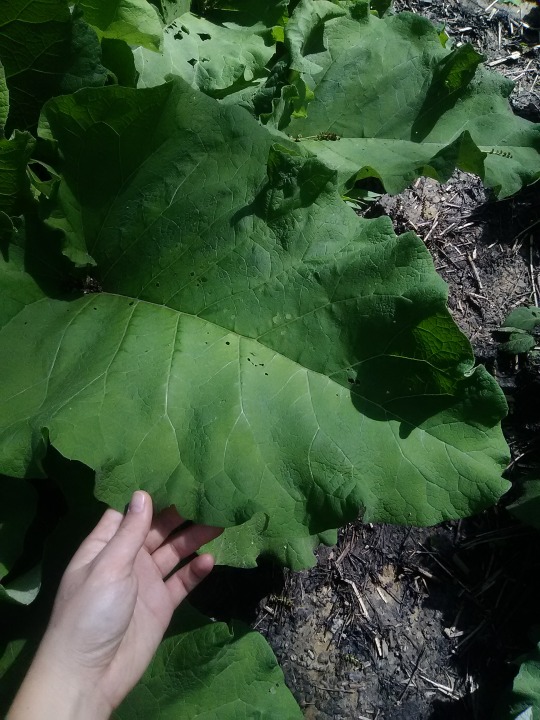
Easy to identify because it’s giant. All parts of the plant have been used for food; burdock root is used frequently in Japanese, Chinese, and Korean cuisine. If you’ve ever had Korean gimbap, you’ve probably had burdock. It acts as a diuretic and has some tannins. Also, the burrs inspired the invention of velcro, the saving grace of five year olds everywhere.
Cleavers

Sticky plant with whorls of leaves going up the stem at regular intervals. The whole thing is covered in tiny bristles that make it cling to anything it comes in contact with. Diuretic, also technically edible but with how hairy it is, I would not personally recommend it.
Sweet Cicely
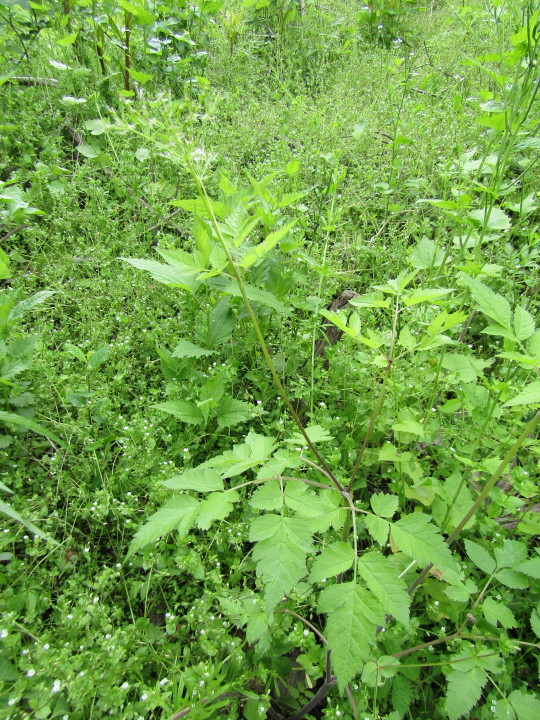
Aka Anise Root. It’s one of those umbrella-flowered plants, though much less showy than the cow parsleys, hemlocks, angelicas, wild carrots and so on. The whole plant is very delicate, with leaflets in groups of three, with the center leaf being the longest, all toothed. The stem is delicate and purple at the base; the whole plant is easy to identify because of its anise-like fragrance (as opposed to carroty, spicy, or musty). Make sure not to confuse with any hemlocks. The root is used for coughs, sore throats, and indigestion.
Mayapple
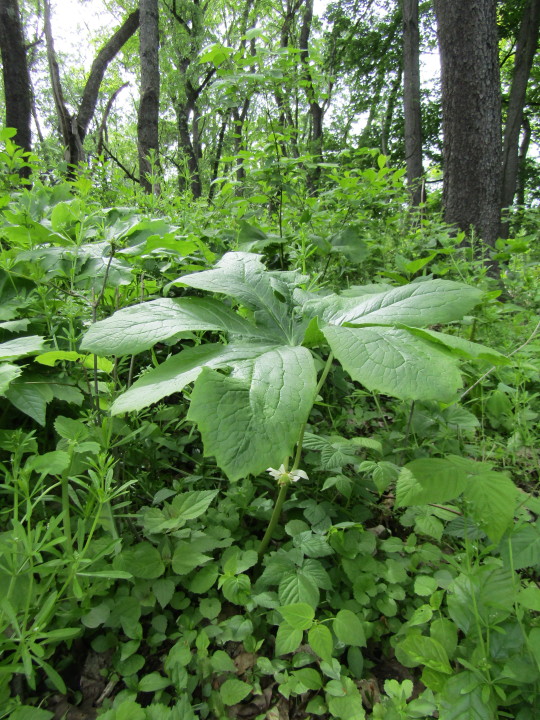
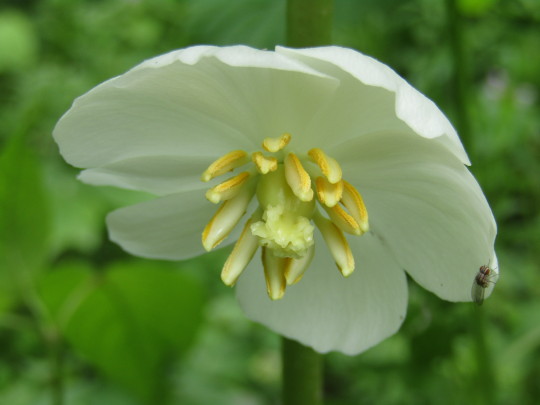
The whole plant is very poisonous, except for the ripe fruit, which doesn’t come around until fall. There are whole stands of them usually, each plant looks like a fancy lobed parasol, or a miniature palm tree.They’re now just starting to bloom.
Violets
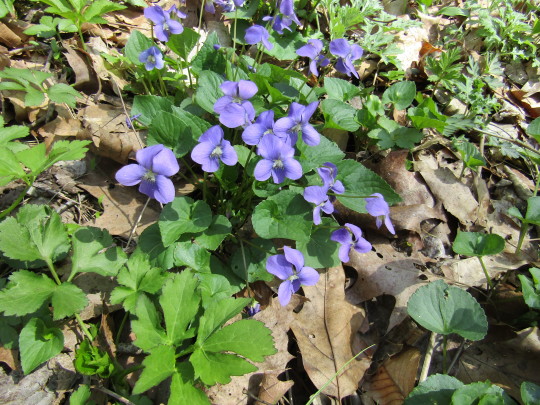
Right now is the prime blooming time for violets. The leaves and flowers are edible, though I haven’t personally tried them. Also, violets can grow a secondary, underground set of flowers that are self pollinating, because nature is wild like that.
Grape vines
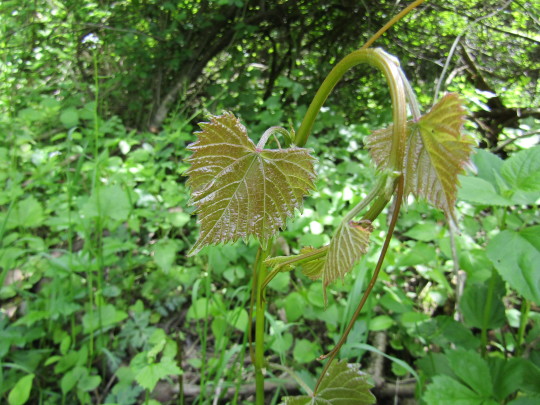
The vines that will produce grapes won’t do it until late summer, for right now it’s mostly baby vines, as you see above. However, the leaves are edible, as well.
Motherwort

Motherwort starts growing pretty early in PA; leaves were already forming at the base of last year’s stems in mid-March, and by May it has already taken over park roadsides and reached 2-3 feet in height. Like others in the mint family, its stem is square in its cross section and the flowers (or rather, flowerbuds, at this point) are arranged in whorls at the (opposite) leaf nodes. The lower leaves are more palmate and lobed as well as serrated, the upper leaves are more narrow and pointed, usually with only three teeth at the very top of the plant. You can see a little bit of both in the picture. It likes roadsides and other disturbed areas.
Motherwort is one of the plants I use the most. Tinctured or dried and used for tea, it’s one of the most effective plants I’ve found for menstrual cramps, anxiety and insomnia. It has an extensive history of being used for hypertension tachycardia, various heart issues, as well as a bitter for digestion.
Garlic Mustard

An invasive and very destructive plant with heart-shaped, serrated leaves and small white, four-petaled flowers. When crushed, it smells distinctly garlicky. There are lots of recipes out there utilizing garlic mustard; should you use any, I would recommend blanching the leaves and/or using only older leaves, as young leaves can contain relatively unpleasant amounts of cyanide. If that sounds scary, consider that raw lima beans contain cyanide as well, just another one of those things you have to boil out.
Ground Ivy
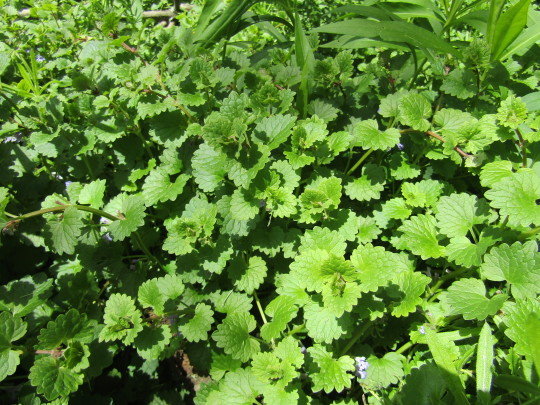
The leaves look similar to young garlic mustard leaves, but on a much smaller scale and with a sweet minty odor when crushed. The flowers are mint-like, small and purple and funnel shaped. Very pleasant eaten or in a tea.
Twinleaf

Another plant not in use anymore, but it’s pretty cool looking. Considered endangered in many states.
That’s it, folks! I’ll do more entries as I get photos of more up and coming plants.
#herbs#medicinal herbs#medicinal plants#plants#spring#spring plant#pennsylvania#pittsburgh#pittsburgh plants
0 notes
Text
Colds and the Flu

I figured since we’re in awful winter illness season now, I would post something about herbs to use to deal with being sick.
The bad news is, there’s really not much you can do to “cure” yourself -- there are no cures for the common cold OR the flu, and likely you will have to deal with being miserable for quite a while. Vitamin C is not going to do much for you unless you’re deficient, and whatever you try, likely the relief provided will only be temporary. But hey, a little time off from feeling like shit is better than none at all, right?
That said, it’s not going to hurt to eat more fruit and vegetables if you feel something coming on -- or eggs, or beans, or meat or whatever else you eat that contains vitamins and nutrients. In my experience, a combination of sudden super-health and preemptive daily echinacea is sometimes enough for me to mostly circumvent whatever everyone else is having. However, sometimes you’re just shit out of luck and you catch it anyway.
There are about a billion herbs out there that have been used for colds, but I am only going to list the ones that I have used repeatedly. I will try to divide them into sections. So:
Some general tea plants for when you’re sick
Nettles, alfalfa, and rosehips -- they contain vitamins and nutrients, and that never hurts. Depending on where you live, you might be able to pick them -- the alfalfa might be dead by now (though it’s worth looking around), but nettles can still be found if it has not snowed in your area and you are not too far south. Seattle, I’m looking at you! Bring gloves, of course. And even if it has snowed, likely you can find some rosehips around, though they may not be the tastiest.
Mints, lemon balm, catnip -- they make you feel better. They just do. Some years ago, I got a bad case of pneumonia/flu/evil mysterious Sonoran desert illness, and the only time I was not a 100% miserable was when I was drinking cup after cup of peppermint and rosehip tea. Then I was only 95% miserable.
Rabbit tobacco -- if you live in the south, this is likely still growing in some scraggly field by your house. It’s papery dry looking (see picture at the top) and smells pleasantly peppery. It’s wonderful and you should put tons of it in your tea.
Yarrow -- a nice anti-inflammatory.
For a sore throat
Again, mints and yarrow.
Mullein, plantain, marshmallow -- all nice and soothing.
Licorice -- helpful, if you can stand the taste.
Brittlebrush -- makes a great numbing gargle and is conveniently everywhere, for those of you that live in the Sonoran desert.
Coughs
Again, licorice root -- honestly, it’s most helpful if you just chew on it for a while and spit it out, but that’s pretty nasty, so you have to be desperate. Otherwise, stick it in your tea.
Anise root -- the tincture. Also known as sweet cicely, one kind grows in eastern U.S. and the other kind in the mountain west.
Also anise seed, which is completely unrelated, but also helpful. And probably more accessible, at this point in the year.
Mullein, again
Eucalyptus -- the baby leaves, and just a little bit in a tea mix is enough. Very helpful for lung pain, but not recommended if you have kidney problems, I believe. Another one that I’ve seen in Arizona and roundabouts.
Osha tincture is helpful, and is also fantastic for the indigestion that sometimes comes with being sick.
Fever
Vervain is fantastic -- up to a tablespoon in tea for adults, a teaspoon or less for kids, according to Moore. Higher doses can reportedly cause some nausea. In normal doses, it lowers fever, settles indigestion, and makes you sleepy, which is perfect for when you feel too sick to go to bed.
Other
Mormon Tea is good to add to your tea mix if you’ve got stuffy sinuses. Some people feel “up” when they take it, so maybe not before bed.
Here is the gross but effective thing my grandmother did for stuffed noses -- mix fresh aloe gel, honey, and onion juice, soak cotton balls in the mixture, and force the people around you to shove these up their nostrils for a while. When you start tasting sweet onion in the back of your throat, it’s time to take them out and drip everywhere. Or blow your nose, whichever.
If you are a smoker who’s having a hard time with nic fits while sick, I recommend herbal cigarettes with a bit of lobelia added in. I usually use a mix from an herb shop in Seattle, but you can make your own -- some good bases for it are mullein, corn silk, rabbit tobacco, and catnip; you can add coltsfoot if you want an expectorant effect, and something like sage or mints if you want a nice flavour. Once it’s all mixed up, add in lobelia, 1:4 by weight. This helps cut down on the nic fits and helps your angry, twitchy smoker lungs feel better.
---
If you live in a place where it hasn’t snowed yet, I recommend exploring what grows around you, because that’s cheaper than going to a hippy store. Again, don’t poison yourself, and keep track of what helps you and what doesn’t. And if you’re in a city, don’t pick things that dogs have peed on.
Also, if you start getting really, really ill? Go to the doctor. I’ve used these teas and tinctures to help me get through some awful sicknesses, and I’m really happy to have enough knowledge to help myself (especially when I’ve been broke). I’m putting it out there because I think it will help other people as well. But if you’re developing bronchitis or pneumonia, nothing will knock that out like antibiotics, and there is no reason for you to suffer.
Be smart and take care of yourselves.
#herbs#flu#colds#medicinal#plants#tea#desert herbs#medicinal herbs#medicinal plants#seattle plants#desert medicinal plants
0 notes
Text
Some Seattle Plants
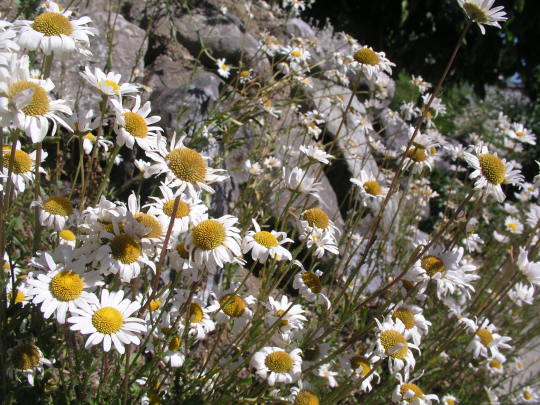
Here’s a list of some plants I’ve found around Seattle, may be useful for somebody. I’ve included some cultivated plants that have escaped from gardens and can be seen growing along forgotten bits of sidewalk. Pictures added where I’ve taken them.
Alfalfa – minerals and vitamins, good as a supplement in colds

Bittersweet nightshade – adaptogen, according to Moore, also kind of poisonous, so...
Blackberry - astringent
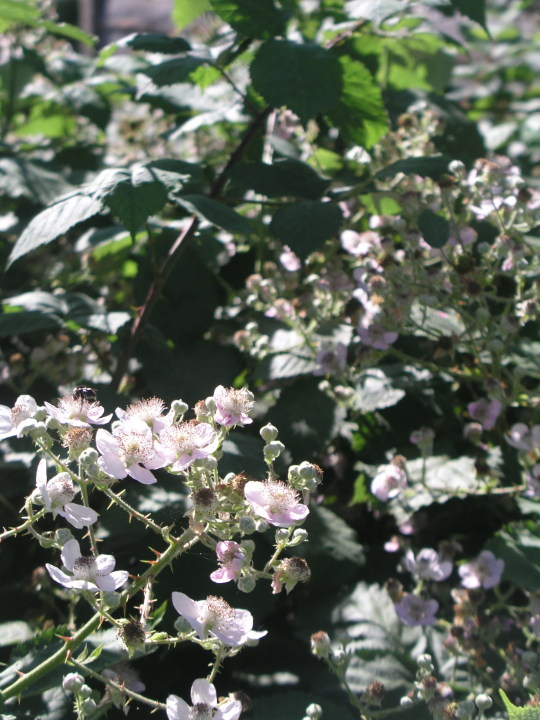
Black Walnut – tineas (athelete's foot, etc.)
California Poppy – anxiety, fresh tea for mild insomnia

Chamomile – stomach tonic
Dock – good for your liver, probably not worth it digging it up, though
Fennel – stomach tonic
Feverfew - chronic migraines
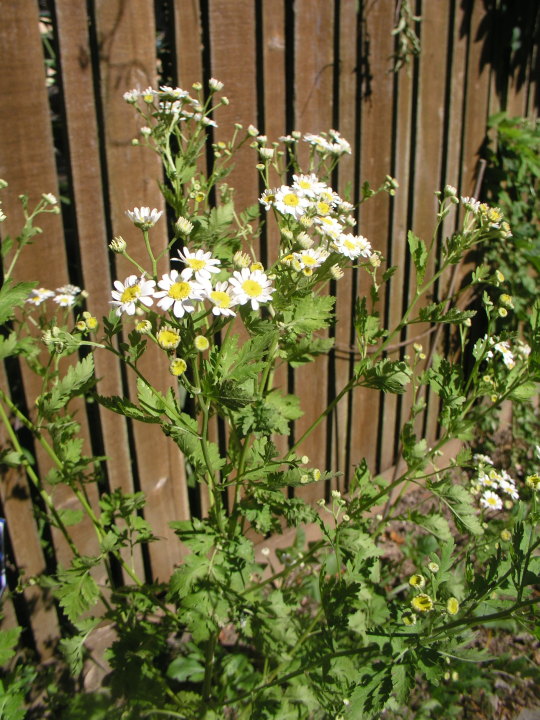
Fireweed - astringent
Horsetail - contains silica and probably some heavy metals, too, so I haven’t ever used it internally. I use it as a hair rinse.
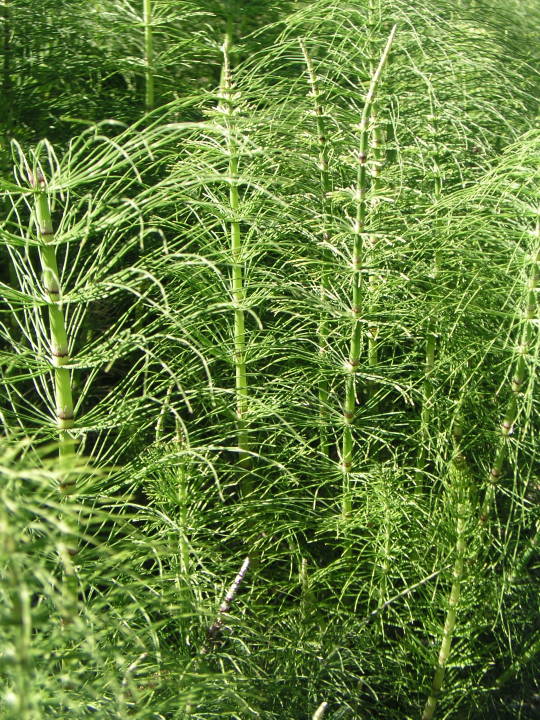
Inside out flower – chest congestion and coughs
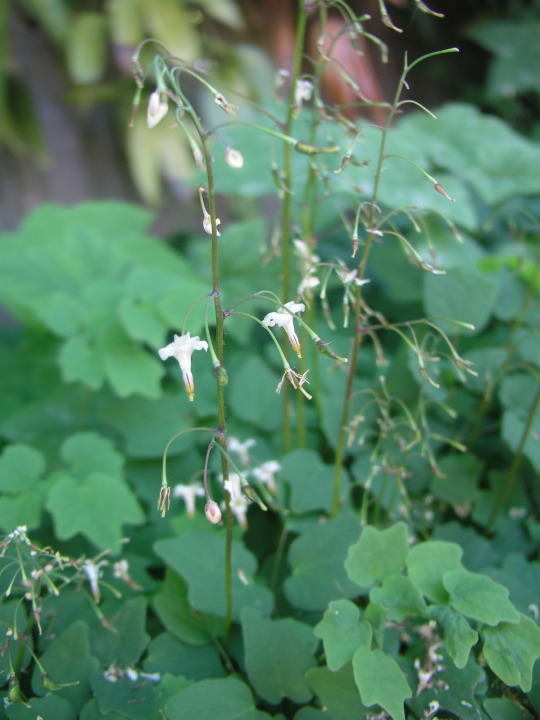
Lavender – it smells awesome
Lemon Balm – nice tea for colds or every day
Mallows – sore throat, coughs
Mullein – sore throat, coughs
Nettles – lots of minerals and such, especially iron, put that shit in tea
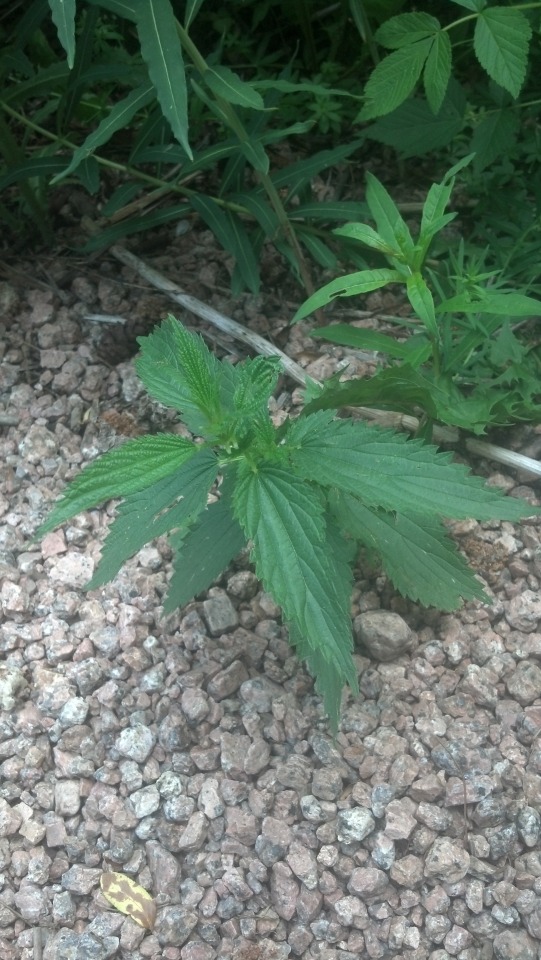
Oak - astringent
Oregon Grape – good for your liver, laxative
Ox Eye Daisy – yeast infection, mild bug repellant, see top picture
Periwinkle – migraines, use with caution (photo taken in GA rather than Seattle)

Red Cedar – tineas, bug repellant
Rosemary – put that shit in your scrambled eggs
St. John's Wort - anxiety
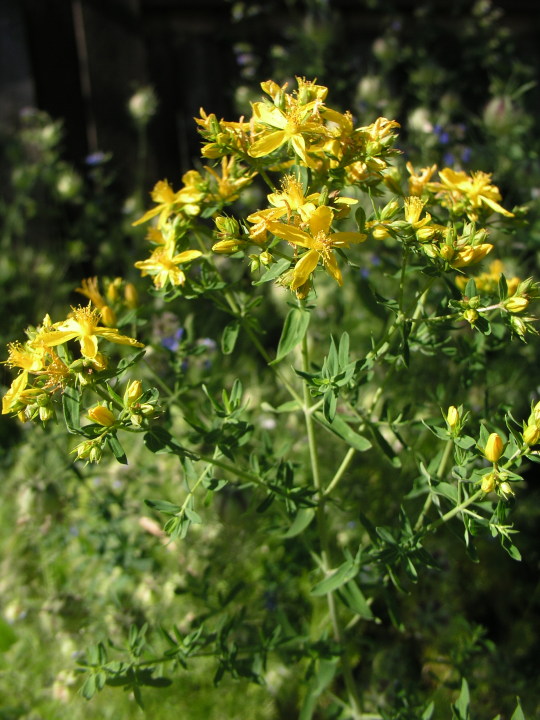
Salal - astringent
Tansy – bug repellent, can cause allergic reactions sometimes
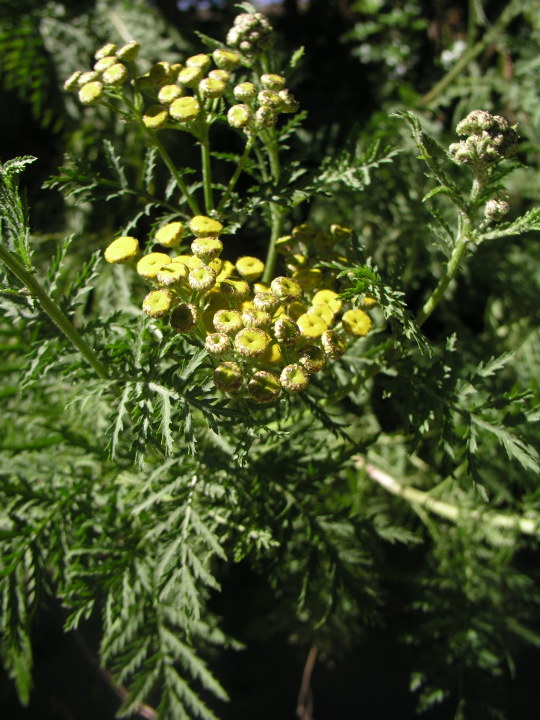
Trumpet vine – yeast infections (in vinegar)
Yarrow – colds, fevers
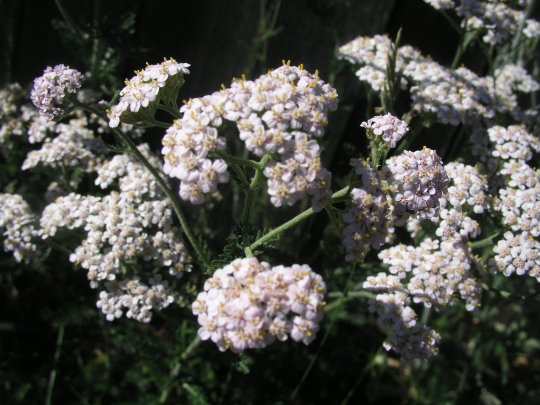
3 notes
·
View notes
Text
Colorado Herbs
Here is a list of all the medicinal plants I have found in Colorado. The majority of these are on site:
Alfalfa
Artemisia spp.
Asparagus
Avens
Bearberry
Bugleweed
Camphorweed
Catnip
Chokecherry
Cow Parsnip
Cranesbill
Dogbane
Evening Primrose
False Solomon’s Seal
Fireweed
Grindelia
Larkspur
Licorice
Mallow
Milkweed
Monarda
Mullein
Nettles
Oregon Grape Root
Pine
Poplar
Prickly Poppy
Queen Anne’s Lace
Saint John’s Wort
Scrub Oak
Sweet Clover
Toadflax
Yarrow
1 note
·
View note
Text
St. John’s Wort
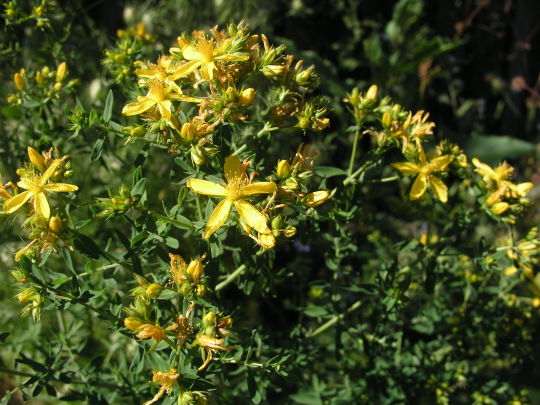
Hypericum perforatum
St. John’s Wort is a really well known herb as far as health-food store supplements go, but not that many people seem to know what it looks like. The plants in Colorado grow to be about a foot to a foot and a half tall; the flowers are small, bright yellow, five petaled, with a fluffy bundle of stamens in the middle.
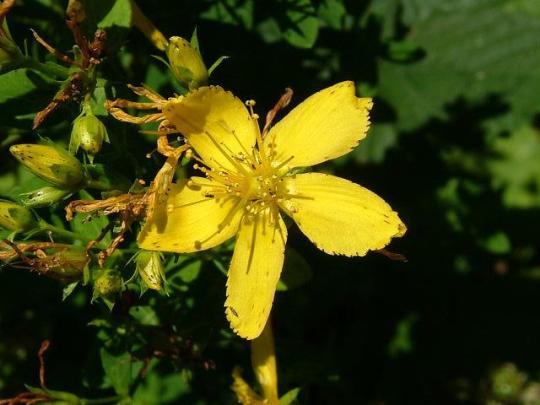
The little oblong leaves, when you put them up to the light, look like they have little holes in them, hence “perforatum”:

Also, the flower buds, when rubbed, stain your fingers purple. The more hypericin -- the most well known constituent of St. John’s Wort -- there is in the plant, the more dye the buds produce.

The plants on site are not the best in that respect, probably because the soil where they grow is pretty poor. I would use the ones onsite as a way to get familiar with the look of the plant, and then check around in nicer areas, where it’s likely to be healthier and more vibrant (and not confined to one sad little patch).

Also, keep an eye out for it in other, more northerly states.
Everyone knows St. John’s Wort for its use in depression -- look it up and it’s all, “NATURAL DRUGS FDA DOESN’T WANT YOU TO KNOW ABOUT,” articles that tell you how to be healthy, and a billion herb shops trying to sell you capsules. Charming. The research is ever ongoing -- they’ve established that the crude extract is a weak MAO inhibitor, so they thought for ages that it was because of the hypericin, but now I guess they think it’s a different constituent, but maybe hypericin is a glutamate receptor? No one seems sure, really. Michael Moore (the herbalist, not the movie maker) recommends it for situational depression rather than chemical -- so, for when your dog dies and your partner breaks up with you and your mom is getting kind of sick and also you might have a cold sore? And you start using an insane amount of panicky exclamation marks in everything you write!!!!!! And that’s when you can make yourself some tea with it, and even if it ends up not helping you, it at least makes for a pleasant tea. Either way, if you decide to take it, for the love of god use either good quality dried plant or a nice tincture. Don’t eat the tiny capsules full of sad, dead, useless dust.
As a side note though! This is where that whole “just because it’s natural, doesn’t mean it’s safe” thing comes it. Because of the enzymes St. John’s Wort affects in your liver, it’s likely to make at least some prescription drugs basically inert -- including birth control, so watch out for that. It can interact with some antidepressants, and also some people get a little photosensitive when they consume a lot of it, though that doesn’t seem to happen too often. Still, if you’ve been drinking the tea for a week and you start getting hives every time you get some sun, it’s probably wise to stop using it.
The steeped oil or salve of St. John’s Wort can be used on abrasions and burns (given some time); it has also been used for pains and aches, but I’m pretty skeptical about this, I’d recommend poplar bud salve instead.
And, well, that wraps up the (virtual) Colorado herb walk, if anybody’s got any questions, let me know. Thanks for reading!
Photo credits:
http://www.aphotoflora.com for the second one, the rest are mine
#colorado#renfaire#herbwalk#st johns wort#saint johns wort#medicinal plants#medicinal herbs#colorado herbs
2 notes
·
View notes
Text
Grindelia
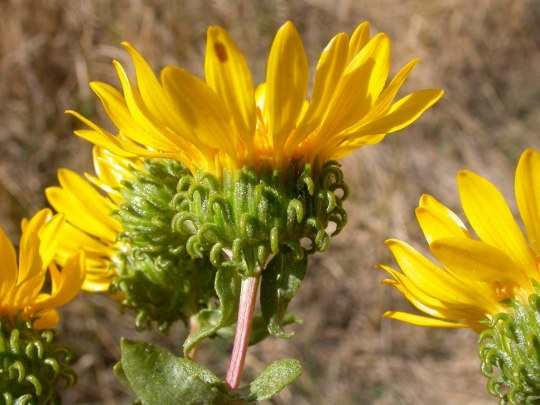
Grindelia spp.
A.k.a. Gumweed or Culrycup Gumweed
Grindelia likes growing alongside roads and unpleasant dusty ditches. The plant is easily recognisable by its bright yellow, many petaled flowers and the curly bracts on the flower buds -- if you look at them closely, as in the first picture, you can see they resemble a very magnified photo of Velcro.

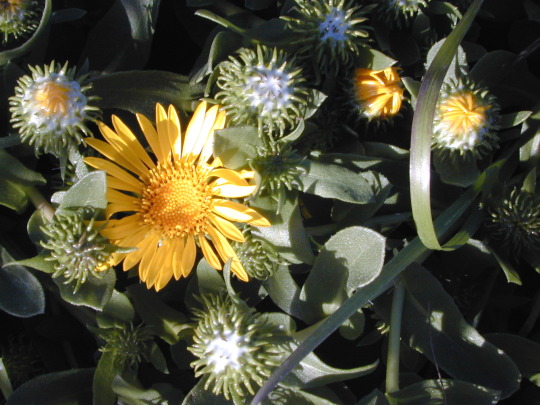
The unopened flower buds are full of sticky white goo that spells pleasantly balsamic. The leaves are alternate, oblong, and pointed, with little saw-like teeth along the edges.
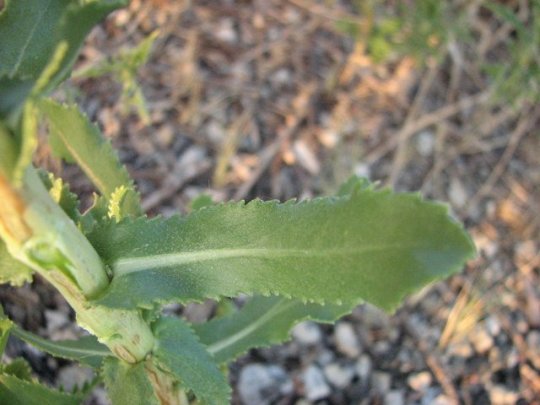

Grindelia is most well known for its use in coughs, specifically dry, hacking, lingering ones. It makes the lungs a little less irritated while also working as an expectorant, so it’s good combined with some mullein. Personally, I’ve found the fresh tea to be very helpful in that respect -- the tincture, not so much. Maybe it was just a bad batch, who knows, but I stuck to drying it after that, at least for colds. Either way, the flower head contain lots of nice lung relaxing resins, more so than the leaves and stems, so I’d recommend going after those.
The tincture is especially useful for UTIs, 1/4 tsp. in water (LOTS OF WATER, just reminding you) every four hours or so. It also seems to have potential is helping with poison ivy outbreaks. They say that about a lot of plants, and most of them I’ve found relatively useless (I’m looking at you, jewelweed!), but on the other hand, there’s some grindelia in Tecnu Extreme, and that seemed to help a lot of people in Oklahoma -- so it’s worth trying out. If you do, let me know how it goes! I haven’t had poison ivy enough times to know (knocking on wood here).
On a side note, various sources claim that the flower buds have been used as a substitute for gum. I have tried chewing on them and despite the nice smell, the experience was absolutely disgusting. I would not recommend doing this, unless you are lost in the woods for years and have grown to have a perverted and twisted idea of what chewing gum is supposed to be like.
Photo sources:
Wikipedia, Matt Lavin
http://www.easterncoloradowildflowers.com
Wikipedia, Dawn Endico
http://www.kansasnativeplants.com
1 note
·
View note
Text
Toadflax

Linaria vulgaris
a.k.a. Butter and Eggs
About a foot tall, with smooth stems and grasslike little leaves, and showy white and yellow flowers.
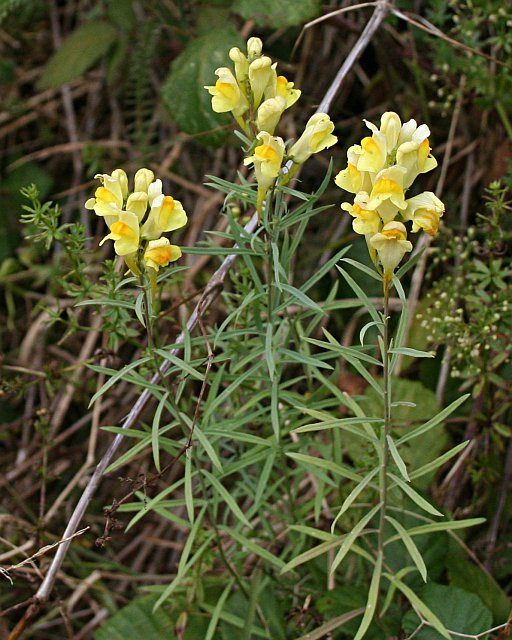
The flowers are similar to snapdragons; they have pointed tails at their bottoms, yellowish white petals at the top and bottom, and an orange doodad in the middle that makes it look like the flower is sticking its tongue out at you. Or maybe that’s just me.
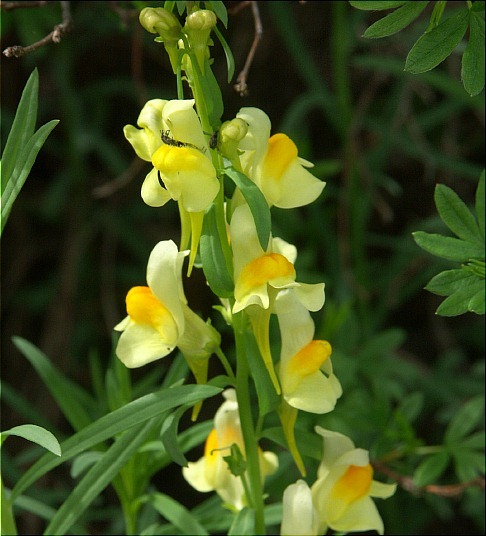

A strong and effective liver stimulant, useful for chronic drinkers and people with hepatitis flare ups, or as an occasional liver "flush”. It does little for those without any liver problems (as it mostly seems to stimulate bile production when it is insufficient) and can be irritating in large amounts, so if you’re fairly healthy and just looking for a tonic, I would suggest sticking to dandelion and burdock, but if your bilirubin levels are off, it will quickly bring them back to normal and reduce some of the feelings of low energy general blahness. Scant teaspoon in tea for chronic drinkers or as a strong tonic, rounded teaspoon in tea a couple of times a day for hepatitis flare ups.
Photo credits:
www.idahoweedawareness.com
Wikimedia commons - Tony Atkins
http://www.turtlepuddle.org/pix/Flowers/
0 notes
Text
Mullein
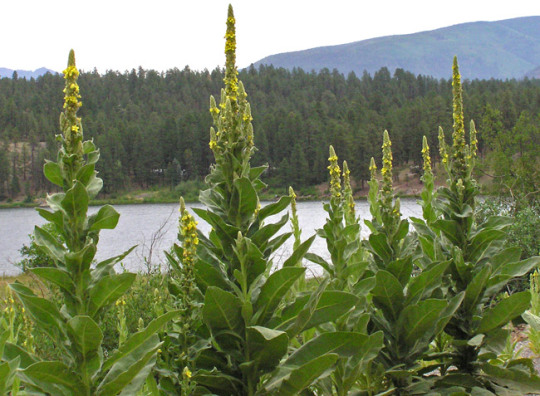
Verbascum thapsus
Mullein is tall -- I remember some of the plants between the office and the dumpsters being almost 6 feet -- and grows out of a basal rosette of large, pale yellowish green, velvety leaves with prominent veins, and smaller leaves growing up the stem.

During the first year of the plant’s growth, it’s just the basal rosette (as seen above), during the second year is when the stem forms, with tiny yellow five petaled flowers growing up along it.
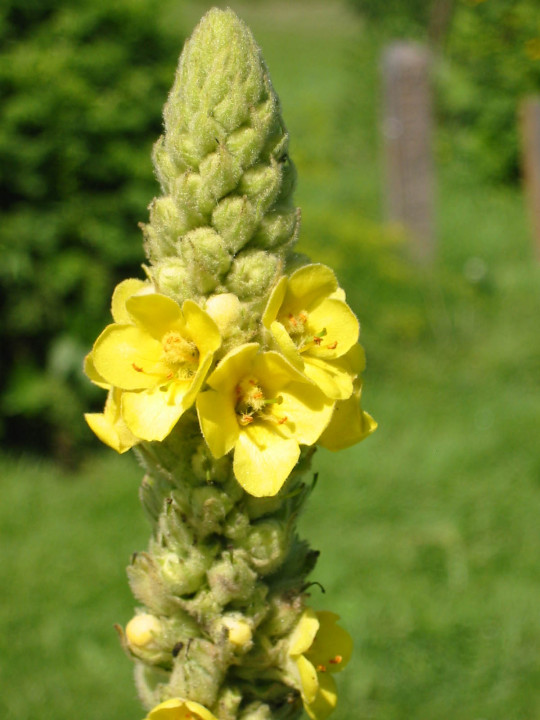
Usually in areas with a lot of mullein, you can see the leftover old dead stems hanging out in the background like decrepit mini-saguaros.

The leaves can be dried for tea; their main use is for lung and throat inflammation, especially at the beginning stages of a cold, and raspy coughs. It’s safe in large quantities, plentiful, and relatively effective. I like using it as a base in cold/sickness teas (along with something nice tasting, like mint or lemon balm, whatever you have around), with stronger plants with more specific indications thrown in depending on how I or the other person is feeling (vervain for fever, mormon tea for congestion, eucalyptus leaves for coughs, etc.). Make sure to strain the tea well, because the fine hairs can be irritating to the throat for some people. The dried leaves are also a good base for a smoking mix.
The traditional use for flowers is for earaches, steeped in olive oil. Every time I’ve tried to make an infused flower oil with mullein, it molded almost immediately, so... you have been warned. I assume the warm oil would be most effective for irritation caused by wax blockages? -- definitely don’t go dripping it in there if you suspect you’ve torn up your ear drum or something.
The flowers contain more volatile oils than the leaves, and can be tinctured for use on cold sores and as a mild sedative (supposedly). This seems dubious to me, but I’ve been wrong before. Considering the constituents, the tincture would probably be most effective for the people who are benefited by Evening Primrose tincture -- oleic acid and all that.
Also, apparently the root is helpful for incontinence due to a weak trigone muscle (the base of the bladder) -- half a teaspoon for some tea, drunk before sleep.
On a more practical note, if you aren’t sensitive to their little hairs, mullein leaves can also be used as a substitute for toilet paper, and most of the plant makes good tinder (just not both at the same time, please). The stalks were, in the past, turned into candles, as reflected in some common names: torches, candlewick plant, hedge taper, hag’s taper. And as far as hags -- as with most plants, old timey Europeans couldn’t decide whether it repelled witches, or if witches loved it and used to to light up their naked witch dancing orgies or whatever, so be prepared for both when you pick it, I guess.
Like yarrow, mullein has accumulated a lot of common names over the centuries. I leave you with some of them:
Torches
Hag’s Taper
Candlewick Plant
Velvet Plant
Rag Paper
Wild Ice Leaf
Beggar’s Blanket
Jupiter’s Staff
Aaron’s Rod (oh dear)
Hare’s Beard
Fluffweed
Clown’s Lungwort
Adam’s Flannel
Cuddy’s Lungs
Duffle
Feltwort
Photo credits:
http://www.swcoloradowildflowers.com for both 1 and 2
http://livingafield.com
0 notes
Text
Yarrow
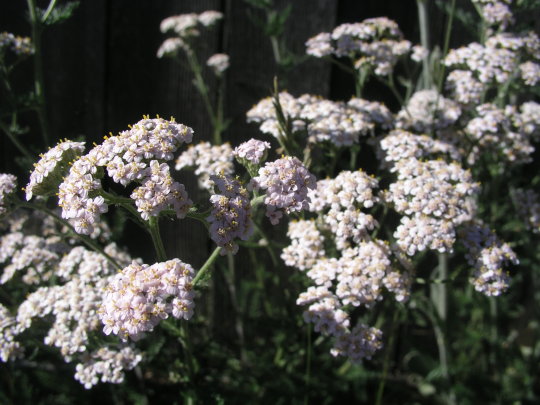
Achillea millefolium
A hairy plant with bundles of white flowers that resemble teeny tiny daisies. There are a lot of plants out there that have bundles of flowers -- yarrow‘s bundles are clunkier-looking than most (personally, they remind me of cauliflower) and are not umbrella-like -- the flower stems stagger up the plant stalk rather than all growing from the same point (like, say, parsley flowers).

If it is umbrella-like, that’s not yarrow, and you should not pick it, unless you are sure that it’s not a hemlock of some sort. Can’t be too careful.
The stems are hairy and the leaves are long and lacy, resembling feathers -- hence one of its names, plumajillo (little feather). The whole plant smells kind of green-spicy-flowery and, in fact, has been used as a spice in the past (mostly in old timey Europe).

Here is where it grows in the campground:

So, mostly on the sides of ditches and sunny roadsides.
Yarrow has a long history of use, mostly for wounds. The genus name, in fact, comes from a legend that Achilles (you know, the heel guy) carried yarrow around with him on the battle field to use on the wounds of his soldiers. But really, it’s been used for any bleeding, not just heroic battle bleeding. Unheroic kitchen bleeding, knee bleeding, ulcer bleeding, general angry internal bleeding -- whatever bleeding you can think of, slap some yarrow on it. Preferably not dusty, side of the highway yarrow though, just saying.
Yarrow is used for dry fevers, to stimulate sweating and lower body temperature. It’s also bitter and antimicrobial, which makes it useful for stomach problems, anything from regular indigestion to helping you out on your recovery from horrible stomach bugs. The foliage is higher in tannins (and therefore more astringent, see oak) whereas the flowers are higher in aromatics; when picking I would just try and get a good proportion of both. The roots can be steeped in some whiskey or whatever you’ve got around, and chewed on for toothaches.
As far as periods, there’s some contradicting information out there -- most books and sites can’t seem to make up their mind on whether it’s good for stopping heavy periods, or for helping along light ones. Most of them seem to kind of fling their hands up in the air and say, “Oh, probably both, I dunno!” or, like, “well, yarrow just KNOWS WHAT YOUR UTERUS NEEDS”. Well! It actually does kind of do both, but it’s a little more specific than just being a magical period fixer. Sadly.
Basically, if you’ve got heavy horrible periods, it can help you because, well, see above. All the bleedings, just shove yarrow at it, etc. With scanty, absent, or just weird menstruation, it can help you if it’s due to bad circulation, irritation (of the uterus, not of you), and/or thin endometrial lining. It increases circulation and acts as a general uterine tonic, which can help make your periods more regular and sometimes less painful. If your periods are messed up due to hormones, though, yarrow’s not going to do shit -- speaking from personal experience.
Yarrow also was used in making beer before the introduction of hops to Europe, and the stalks were used in the I Ching.
I will leave you with a list of various names yarrow has been called through the ages; it’s pretty entertaining:
Millefoil
Knight’s Milfoil
Woundwort
Bloodwort
Staunchweed
Sanguinary
Nosebleed
Thousand-leaf
Yarroway
Gearwe
Devil’s Nettle
Bad Man’s Plaything
Carpenter’s Weed
Old Man’s Pepper
Old Man’s Mustard
Eerie
Field Hops
Snake Grass
Seven Year’s Love
Death Flower
...and so on.
Image sources:
Wikipedia, O. Pichard
2 notes
·
View notes
Text
Bearberry
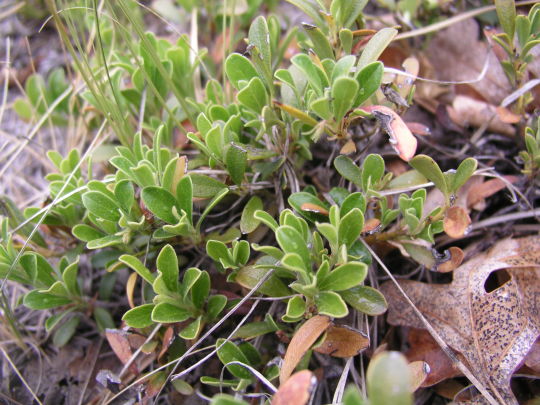
Arctostaphylos uva-ursi
A red stemmed little plant generally found around coniferous trees, forming mats over steep trail sides and forest clearings. The leaves are leathery and tear drop shaped, with a strong vein in the centers; the flowers are whitish pink little urns, similar to blueberry flowers. The berries are red and mealy.
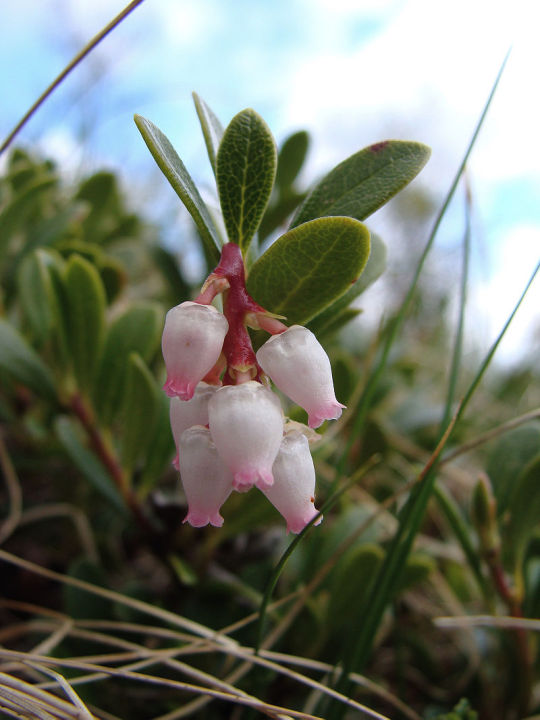
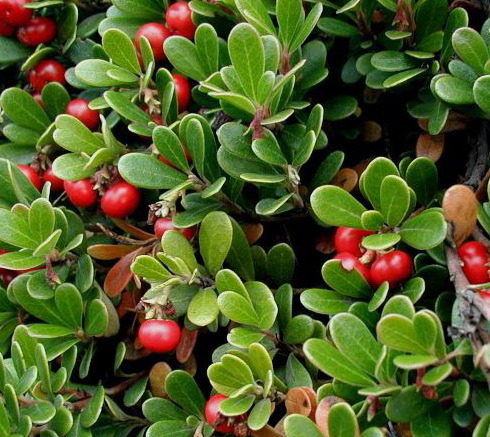
The active constituents in Bearberry are arbutin and ericolin, which get converted into hydroquinone and methylhydroquinone in your body, both disinfecting to your urinary tract.
What this means is Bearberry tincture is fantastic for UTIs. If you need it sooner than 6 weeks, you can leave it in some alcohol for 2 or 3 days, then make tea with the soggy, boozy leaves (1 tsp. per cup). It will taste like pond water, but it will help. Of course, remember also that in order for it to work on your UTI, you have to not aggravate it -- so no sugar, no drinking, no sex. I know that sounds like a boring couple of days, but it’s like this -- if you had lice and were trying to knock them out with anti-lice shampoo, would you do it while sitting in a tub of nits? Well, then.
Bearberry is a uterine vasoconstrictor, which means that it may help some folks with heavy, painful periods, and also that it should probably not be used during pregnancy. It has, however, been used after childbirth as a sitz bath, to take down inflammation and prevent infection in people’s bits.
Large frequent doses can be irritating to the stomach, so I’d keep the usage down to a week. The standard dose for UTIs is half a teaspoon in water, give or take, consumed as needed.
Bearberry leaves can also be smoked, and are reportedly fairly mild, though I’m sure they’re a pain in the ass to break up into small enough pieces for a cigarette.
Bearberry doesn’t grow much in campground proper -- it grows along the back path to the gas station, and also around and behind the festival grounds.

As a sidenote, the Latin name -- Arctostaphylos uva-ursi -- literally translates to “bear grape, grape of bear.” Just in case you weren’t sure bears were involved.
Image sources:
Wikipedia, Yvonne Zimmermann
http://www.flowers-gardens.net/flowers-part-2/bear-berry-plant.html
2 notes
·
View notes
Text
Judgmental Guide to Herb Books
Type 1: The Herbal Picture Book
Large thin books with snappy photography. They are all called “Medicinal Herbs,” all fifty thousand of them, as a form of camouflage. You never know, as an Herbal Picture Book, when a big scary tome on engineering or accounting comes along to snap you up; you gotta keep your head down.
Most Herbal Picture Books only cover plants like rosemary, lavender and chamomile, though some of the better ones branch out into Ye Popular European Pharmacopeia -- you know, angelica, feverfew, meadowsweet, that sort of thing. Every single plant in these books is photographed with a shadow, as if it just happened to stumble into a book, perfectly coiffed, and decided to lay on a page and wait for the next lucky library patron. They’re like the botanical versions of pin up girls.
Pros: Cool pictures of plants, mortar and pestle sets, and fancy bottles. The better ones are nice for some quick basic information.
Cons: As I said, very basic. Also, there’s only so much you need to learn about rosemary and lavender.
Who Reads Them: Well-meaning hippies, yuppies who think they are hippies, beginning herbalists that aren’t sure where to start.
Type 2: Medicinal Herbs, M.D.
Thick white tomes, usually shelved next to “2,000+1 Home Remedies!!!!”, written by people with M.D.s and Ph.Ds sprinkled around their names. They usually have a bigger selection of plants than Herbal Picture Books, going a good bit into Ye Popular European Pharmacopeia (special emphasis on White Willow Bark and Valerian) with the occasional foray into traditional Chinese medicine. They talk a lot about antioxidants and “cancer research has shown possibilities in...“
Pros: They’re usually a good source of basic, generalized information, like “Valerian is used for insomnia,” or “Angelica has been used for coughs.” They also sometimes have some interesting historical tidbits, and information about studies.
Cons: The authors have, like, no personal experience. They probably drink mint tea sometimes? And they’re kind of worried that YOU’LL want to drink mint tea, but will end up poisoning yourself somehow? The general impression you get is you’re being given a very well researched book report.
Who Reads Them: Hippies that are full of unwanted advice, yuppies that are trying to Go Back to Their Roots, rich people worried about aging, beginning herbalists that aren’t sure where to start
Type 3: ST. JOHN’S WORT: THE HIDDEN CURE FOR DEPRESSION
Brightly coloured books claiming that THIS PLANT RIGHT HERE will SOLVE ALL OF YOUR PROBLEMS if only THE BIG PHARMA STOPPED SUPPRESSING IT.
Pros: They probably mention some studies that are worth looking up. And there’s bound to be some good information in there. Possibly.
Cons: Alas, whatever that plant is, it probably won’t prevent cancer, cure depression forever, AND save your marriage. Just because they aren’t “The Big Pharma” doesn’t mean they aren’t trying to make a buck off you.
Who Reads Them: Conspiracy theorists, old ladies who like saying, “Well I read that you should...,” people that are desperate for a solution to a problem.
Type 4: A Compilation of Great and Useful Herbs for the Family, New & Revised Edition for 1924
Older herbals full of as many plants as they could afford to cram in there. Latin is used freely, and there are liberal mentions of hysteria, syphilis, and dysentery. They tend to be very specific about herb preparations -- lots of weighing of grams and mathematics and ratios. Also, recipes for questionable after-dinner cordials.
Pros: This is where you find potentially very useful but forgotten information. Also, they’re a fun read.
Cons: Some of the information is potentially useless, insane, or dangerous. Consuming lobelia by the bucketful is SO over.
Who Reads Them: Historians, ye olde schoole herbalists, 11 year-olds trying to find out how to make Flying Ointment using Jimson Weed.
Type 5: Talking to The Nettles, by Bearberry Sun-Pudding
These books have a mix of herbs you know and some random shit growing in your backyard. There is also likely going to be poetry and a section on Womyn’s Plants/Moon Time/Nurturing Wise Roots Medicine.
Pros: A lot of time the people that write these books actually have personal experience, which is rare and invaluable in the world of Herb Books. They form Opinions, and will tell you things like, “I find that [X plant] is too harsh on the liver and makes people poop a lot,” and “Plantain infused oil tends to mold.” Sometimes you find that after some testing, you disagree with those opinions -- but hey, now you have a Plant Opinion of your own! And that builds experience.
Cons: Other times, though, they pull things out the ass because they want to BELIEVE that nettles is an antidepressant, and they just KNOW that the spirit of motherwort talked to them the other day. You really have to take a lot of the stuff in these books with a grain of salt. Or a pile.
Who Reads Them: Hippies with an extra side of woo woo, conspiracy theorists, people that Really Want to Get into Herbalism, Seriously.
Type 6: Michael Moore books
Books by Michael Moore-- the herbalist, not the movie maker. Medicinal Herbs of the Desert West, Mountain West, etc.
Pros: They’re based off of personal experience, they’re funny, they’re practical. They tell you when gathering a certain plant will make you want to eradicate it off the face of the earth, and make references for what herbs to use when you’ve “partaken of too much of that mysterious white powder last night.” If Moore were still alive, he’d be able to tell you what herbs to take to make you shoot lasers out of your eyes and shit rainbows.
Cons: Uh, this one time he was explaining exactly how echinacea affects your immune system and there was a lot of technical talk about white blood cells and mucopolysaccharide hydrogels and I didn’t fully understand it.....? I dunno, I’ve got nothing. He is a golden god.
Who Reads Them: Old hippies, people who live in the middle of nowhere, broke herbalists, sickly hikers. Completely unbiased people who write blogs about herb books.
There are more books out there, but it’s been a long day, and as they say: I can’t even.
Anyway, enjoy my judgmental list. I’ve read all of these books, so I don’t really have a foot to stand on, as far as judgment. Except type 3. Those really do suck.
11 notes
·
View notes
Text
Scrub Oak
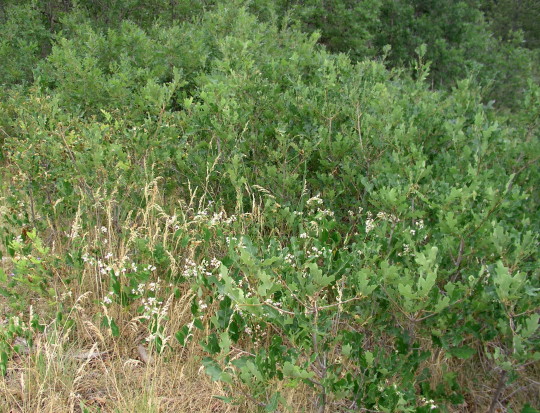
Quercus spp.
This oak is more of a shrub than a tree and it grows like crazy in the campground. Most people are familiar with oak -- for those of you that are not, this kind is probably that bendy shrub you tried to tie your tarp to one time, because there was nothing else around, and ended up with a tarp job that looked like a baggy diaper. Certainly as far as tarp support, these oaks are useless.
At their tallest and mightiest they MIGHT hit 7 feet. The leaves, like other oak trees, are oblong and lobed.
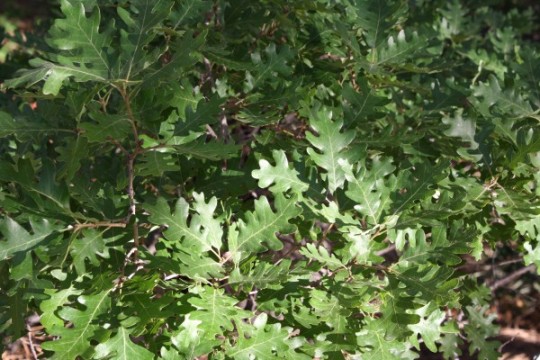
Ours are a little less deeply lobed than the leaves in the picture above, but you get the idea.
As I said, it grows everywhere:
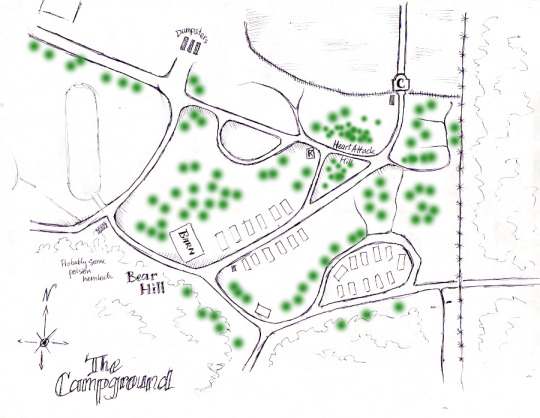
Oak is your basic, run of the mill astringent. Astringents constrict tissues; they’re used to stop bleeding, to take down skin irritation (particularly from burns), mucous membrane irritation such as sore throats and gums, and for diarrhea. The primary constituents in oak are tannin and quercetin, and all parts of the oak shrubs can be used, including the galls -- the little brown balls that can often be seen on oaks:

The way that galls happen is basically some little insect lays an egg and the larvae secrete enzymes that cause the oak cells around it to grow like crazy, thereby forming a little nest for the larvae to hang out in until it grows. So if you don’t like the idea of baby insects, stick with the leaves and the bark.
For most ailments, you can make a tea of leaves or bark (or chew on bits and pieces of them, if you’re desperate). Sadly, an enema is the recommended way to go for diarrhea --1 tb. bark boiled in a pint of water, cooled to room temperature -- since most of the tannins don’t make it through the intestinal tract. Tannins bind with proteins, which is part of what makes them useful in burns. They also bind with alkaloids, rendering them useless, so it’s best not to make, say, a compound tincture of oak and oregon grape and expect it to do much other than be alcohol. Here is a list of some other plants best not mixed in tinctures.
Oak is a good thing to keep in mind when you’re hiking, since it’s widespread and useful for a variety of cuts, bites and pains. Supposedly chewing on it even helps toothache, but I don’t get too many toothaches (here’s to me jinxing myself), so I haven’t had a chance to test it out.
ETA: Just tried out oak bark on the worst heat rash I’ve ever had. I pronounce it fairly useful.
Photo credits:
http://www.photos-public-domain.com
http://www.extension.umn.edu/garden/insects/find/insect-and-mite-galls/ -- Taken by Jeff Hahn
1 note
·
View note
Text
Larkspur
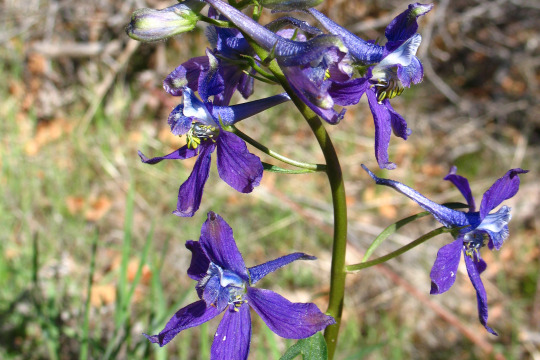
Delphinium spp. (possibly nuttallianum)
One of the earlier plants to bloom on-site in Colorado is Larkspur, though it’s surprisingly spindly and non-abundant, considering the whole town is named after it. There are a lot of varieties of Larkspur out there, some large and showy, some scarlet, etc.; the variety we have gets to be about a foot at the most (though it might be different this year, what with all the rain I’m hearing about) and has small blue-purple flowers. The flowers have five petals (technically sepals -- the “true” petals are the tiny doodad in the middle) and a single “spur” in the back; the leaves are deeply divided and palmate, which is a term for leaves that vaguely look like your hand, when you spread out your fingers. Like this:

Given that your hand is green and has some weird-ass fingers. Also, our larkspur’s leaves are a little more feathery than this picture.
Our larkspurs generally flower right at the beginning on the show and quickly go to seed. The seeds are in three oblong, slightly curved segments:
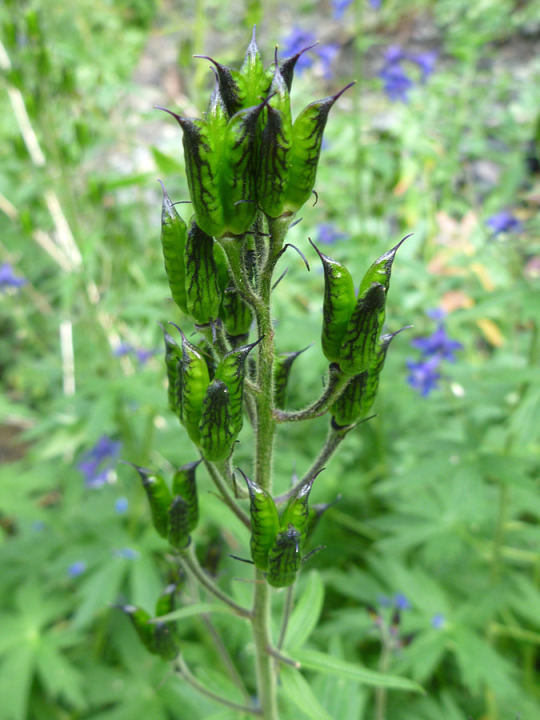
Here is another picture, because you can’t have too many pictures:

It’s a pretty little plant. It’s also fairly poisonous internally, so don’t go chewing on it with joyful abandon. Or mournful abandon, or any kind of abandon. Unless you have a fondness for convulsions and vomiting, but you know, to each his own.
Larkspur is used topically for killing creepy crawlies such as lice and scabies, in various tincture forms. I actually have no personal experience with this, as I’ve been lucky enough not to have lice (at least not since I was 13 or so), so I can’t tell you if it works or not. I guess there’s a product in UK that uses larkspur that is apparently fairly effective? Either way, if you do use it, remember that just because it’s natural doesn’t mean it’s safer than store-bought lice shampoos -- if you have a lot of sores from scratching at whatever you’ve got, the alkaloids can get absorbed enough to make you kind of ill. Also keep in mind that Larkspur gives some people a rash -- in fact, looking at the reviews for Delacet (the UK product) there are at least a couple along the lines of, “Killed my daughter’s head lice but now she has a rash AGHHHHHHH,” and so on.
That aside, if you are lost in the wilderness, alone, sad, and covered in lice, here’s how you prepare it. Gather the ripe seeds and grind then, then combine 1 part seed powder to 5 parts (by volume) Tincture of Green Soap (preferable for head lice and obtainable from most drug stores), rubbing alcohol, or vinegar and steep for a week. The soap tincture is rubbed into damp hair, left in for ten minutes, and rinsed out. The vinegar tincture is best used for pubic crabs, and the alcohol for scabies (applied for 4 days or so in the evenings, after a bath or shower).
Of course, living in a campground means that at any given moment you’re probably like five feet away from five different people, so if you try it out and it doesn’t work, those five people (among others) will be pretty mad at you for not getting normal lice shampoo, so keep that in mind.
Oh, and here’s my approximate map on where you can find it in the campground.

Have a good first weekend folks, and avoid itchy-looking children!
Image credits, in order:
http://www.wildflowerchild.info/search.cgi?hike_id=48
https://pacablogger.wordpress.com/tag/larkspur/
http://www.americansouthwest.net/plants/wildflowers/delphinium-barbeyi6_l.html
http://www.bentler.us/eastern-washington/plants/upland-larkspur.aspx
2 notes
·
View notes
Text
How to Preserve Your Herbs
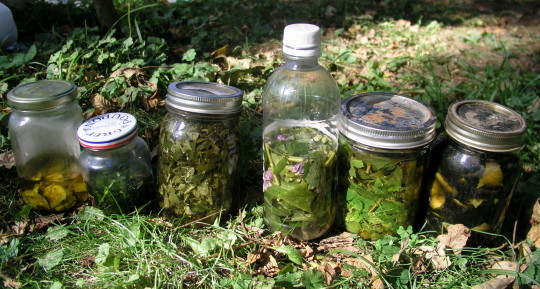
Drying
Dry in as cool and dry of a spot as you have accessible, out of the sun. Make sure the plants are not all matted together. When they are dry, it’s best to store them in glass and out of the sun. For the sake of traveling convenience I started storing some of mine in zip lock bags -- mostly the non smelly ones, like mesquite and mormon tea -- but plants like mint or chaparral still went in jars.
Tincturing
I believe the official standard for fresh tinctures is 1 part herb to 2 parts alcohol by weight, but personally I just stuff them in a jar and cover with booze indiscriminately, and they turn out fine. The only exception would be some of the more potent plants that have the potential to poison you, in which case the proportions depend on the plant. Other than that, try to get the booziest, highest percentage alcohol you can get your hands on, make sure all the plant matter is covered up, and leave it alone for six weeks or so.
Infused Oil
This is what you need if you want to make a salve. It’s basically the same as making a tincture -- stuff it into a jar, cover with oil, leave it alone for a month or two. Some plants (for an example, plantain) like molding; those I let wilt a little beforehand to let out some moisture. If you’re worried about molding, you can also add some vitamin E oil, or chaparral infused oil (if you go to AZ or know someone who does).
Salves
Take 5 parts strained infused oil to 1 part chopped beeswax. Heat over medium low until it’s all melted together and pour into container of your choice. That’s it. You can get fancier with it with the additions of shea butter and all that stuff, but that’s up to you.
2 notes
·
View notes
Text
Some Basic Information
Before I go into the specifics of each plant, here is some basic advice on picking and using medicinal plants.
1. Always be sure of what you’re picking. You don’t want to make what you think is angelica tea and end up dead because it’s actually water hemlock. If you aren’t a 100% sure, look it up again. And again. Look at the pictures, try to find out what look-alike plants, if any, are out there. Does it have a specific smell? Does it like a certain type of environment? Do the leaves grow in pairs, or do they alternate?
2. Pick plants responsibly. The standard rules are to not pick more than one third of a stand of plants, but I would go with even less than that if we’re talking about the plants in the campground. Keep in mind also how widespread the plant is and what parts of it you’re picking. For example, Mullein grows like crazy in the CO campground, and picking some leaves is hardly going to decimate its population; on the other hand, if you and two other people go around site pulling out the one third of the roots of every Oregon Grape plant you see, it’s not going to stick around for much longer. If there are only a few patches of a certain plant on site, use those patches to get familiar with what it looks like and retain that knowledge for when you go hiking/walking to the corner store/getting stuck in brambles later. Also, if you do go for the roots, pick only on the outside of the stand of plants, and it doesn’t hurt to throw a few root cuttings back in later.
3. Educate yourself. Just because it’s natural doesn’t mean it’s safe. Always do your own research, and check multiple sources. Sure, somebody named Bearcub or Starshine may have told you that that smelly white plant is totally sage and that you should drink five cups of it a day, but I would advise getting a good plant guide before you end up with a stomach ache. And yes, a site called LetMeSellYouHippieMedicine.com may have told you sage will strengthen your prostate, renew your liver AND kill head lice -- does that sound too good to be true? Well, it probably is.
4. Use your common sense. All the books say that such and such plant will take away the itching in your ant bites, and yet it does nothing for you. Maybe it does something for other people, but who cares? You’re the one staying up until three in the morning scratching yourself. If a plant doesn’t work or makes you feel worse, stop using it.
Next up, I’ll post the basic recipes for tinctures and salves, and then we’ll be off!
0 notes